Boston Ballet’s Community of Players: Artistic director Mikko Nissinen develops relationships with Jorma Elo, William Forsythe and more - Vancouver Ballet Society
- Home
- Features 2015 - 2019
- Boston Ballet’s Community of Players: Artistic director Mikko Nissinen develops relationships with Jorma Elo, William Forsythe and more

by Janine Parker
When the “regional ballet” movement began in the United States, it was about more than geography: these fledgling companies had identities. Indeed, in 1965, when E. Virginia Williams’ New England Civic Ballet cast off its amateur status to become the Boston Ballet, much was made about its Yankee pride, frugality and grit, while the dancers themselves, like Williams, were by and large born and bred in the area.
Today, though Boston Ballet has long shed its modest regionalism, it remains a much-loved local institution that is also one of the leading companies in the U.S. and recognized internationally. Its formidable repertoire — which includes full-length classics as well as neoclassical and contemporary ballets — is magnetic for audiences and also performers. Boston Ballet attracts dancers from around the world. Directed for the past 17 years by Finnish-born Mikko Nissinen, last year’s roster of 56 dancers, according to executive director Meredith (a.k.a. Max) Hodges, came from 17 different nations.
The dancers — as in many ballet companies today — also come from a variety of training styles. On the one hand, this range invites electric eclecticism; conversely, stylistic differences can be challenging, particularly when staging traditional works or pieces requiring seamless group phrasing.
Yet unity is an area in which Boston Ballet is hailed. According to area arts critic Jeffrey Gantz, “the corps is the best it’s been over the past 30 years.” Choreographer William Forsythe, who is entering into his third year of a five-year contract with Boston Ballet, told me he thinks there’s a “very good feeling of ensemble; they’re very cohesive.”
Nissinen says it’s not simply a matter of exactness of timing and line; a company must “approach the movement the same way; not just try to be together,” but also to have the same “intent behind the steps.”

Photo: Rosalie O’Connor
Longevity within the ranks is, of course, a crucial ingredient for a strong sense of ensemble; continuity of artistic staff is also valuable. Another Finn, resident choreographer Jorma Elo, has made 15 ballets at Boston Ballet over the past 13 years. When he returns to Boston, he says, it’s to “people who know me as a person and as a creator, so I’ve been able to create things here that I’ve not been able to do anywhere else.”
It’s likely no one at Boston Ballet knows Elo better than Nissinen; they grew up together as dancers in Finland. Both went to Russia as teenagers and received training in the exacting Vaganova style before going off in different directions to pursue their careers, dancing with major companies, including San Francisco Ballet (Nissinen) and Nederlands Dans Theater (Elo).
Their artistic paths crossed again early in the second phase of their professional lives. Nissinen, at the time the director of Alberta Ballet, needed another ballet to complete a program but had very little money left in his budget. Knowing Elo had begun to choreograph, he reached out to his old friend. One piece became two and then, soon after arriving in Boston, Nissinen invited Elo to come along.
“I usually don’t like working with friends,” Nissinen says, but after the success of the first pieces Elo did for Boston, “I knew he was going to go all over the world, and I thought it was much better he goes there as the resident choreographer of Boston Ballet.”
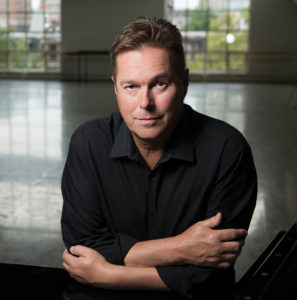
Photo: Liza Voll
Elo’s choreography, particularly in his earlier ballets, has frequently been described as “quirky.” The movement is based in classical vocabulary, but it is often bracingly fleet, chock full of both twitchily precise subtleties and sumptuous undulations; it comes as close to reinventing the wheel as is possible in a genre centuries old. Elo’s striking style has made a marked impact, and, true to Nissinen’s predictions, his ballets are now in the repertoires of many companies.
Elo says that when he first arrived at Boston Ballet, there were fewer dancers who could “excel in contemporary work,” but now many more of them are “able to shine in all ballets.” He adds, laughing, “I mean, they’re required to,” referring to their need to not only perform a wide range of styles, but also to hop in and out of those styles during the course of a regular day of rehearsals.
Last season’s lineup painted that mixed picture clearly, with traditional productions of classics (including a Balanchine program) and two mixed bills by contemporary choreographers (Elo, Forsythe, Wayne McGregor and Justin Peck).
In March 2019, one full program will be devoted to Forsythe’s works, including a world premiere to be created on the company — a major coup so soon after Forsythe’s return to his native country after decades away, much of which he spent directing and choreographing for the innovative Ballet Frankfurt. As well, in addition to the usual diet of story ballets, the upcoming season will pay tribute to Jerome Robbins’ birthday centenary with performances of Fancy Free, Glass Pieces and Interplay.
Nissinen acknowledges the low number of female choreographers presented regularly on the Boston Ballet stage, and has encouraged female dancers to participate in recent composition workshops. He’s excited about a program slated for the 2019-2020 season that will be composed of choreography, music and décor created entirely by women, including, Nissinen says with glee, one “from perhaps the finest female choreographer living today.” Details have yet to be made public.
The company’s multi-hued choreographic palette, says Larissa Ponomarenko, a beloved former principal and now a ballet master for the company, “develops you as a dancer and as an artist, and makes you very well rounded.”
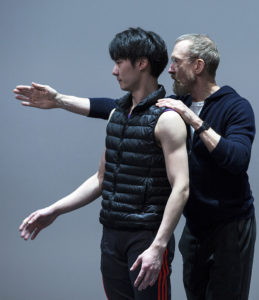
Dancer Chyrstyn Mariah Fentroy agrees. One night, she says, “your body is doing every movement in contemporary form, and then you have to refine and be able to do classical ballet the next night. It makes us very strong and smart.”
When pressed to explain what he looks for in a dancer — beyond having “a strong command of technique and being very musical” — Nissinen says he wants them to be “interesting … I have this motto in the company: I want you to be so strong that you can be vulnerable. I don’t want [the dancers] to dance to the audience, but I want them to be very present.”
Of course, this presence cannot be built, either from the audience’s perspective or from within the company, over the course of just one season. Principal dancer Lia Cirio, who joined the company in 2004 after a year in the junior group, Boston Ballet II, is one of a number of veterans who engenders familiarity onstage for viewers, as well as a sense of family offstage for members of the organization. Her career in Boston has fairly paralleled Elo’s; indeed, she’s something of a muse, having danced in all but one of his ballets for the company. “Because I’ve worked with [Elo] so much, I can grow with him also.”
Like Cirio, Fentroy — entering her second year with Boston Ballet — praises the company’s nurturing atmosphere. Fentroy was initially hired as an artist (the rank title Boston Ballet now uses in place of corps de ballet), but was a featured soloist in many ballets, and has been officially promoted for the upcoming season. “This company is really interesting because everyone has their own strengths.” Forsythe’s work, meanwhile, “allows you to find you, and I think that’s really beautiful.”
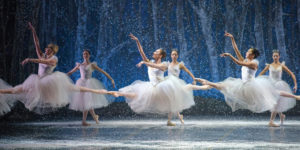
Photo: Liza Voll
Forsythe distinctly fosters this sense of artistic freedom. “Well, I figure everyone in the room with me is some sort of expert,” so, he says, they are able to “just talk about those details that experts talk about.”
Though Boston Ballet’s history with Forsythe goes back as far as 1989 when it performed his Love Songs, he is clearly enjoying this opportunity to dig in more deeply with the company over several years. When asked how he felt about Boston Ballet’s 2017 performances of his epic Artifact, Forsythe was quick to say he thought the dancers were “phenomenal. I thought that the result was one of the best I’ve ever had with the ballet, by far, by far.” (Boston Ballet was the first North American company to perform his 1984 ballet.) In April 2019, when the company makes its Paris debut, two of the three ballets will be by Forsythe.

Photo: Rosalie O’Connor
Nissinen told me last winter that Elo’s Bach Cello Suites would be presented in Paris, but it’s since been announced that Jirí Kylián’s Wings of Wax will complete the program instead. If there is a sense that Nissinen, Boston Ballet and Forsythe are in the honeymoon period of their relationship, I’ve been assured that no one’s breaking up with Elo. Nissinen describes his and Elo’s alliance as “organic” and “ongoing.”
While Fentroy recognizes that she, too, is in a honeymoon phase with the company, she is clear-eyed about the practicality of other incentives Boston Ballet offers its dancers, such as the world-class facilities and wellness programs. The relationship that founding artistic director Williams began decades ago with orthopedic staff at Boston Children’s Hospital has developed into a paradigm of health care specific to these elite athletes.
“Before class we have fitness training and we always have people — nutritionists, doctors — coming in,” second soloist Isaac Akiba says. The company headquarters in Boston’s South End contain seven professionally equipped, well-lit studios, which Akiba says “can really lighten your day,” acknowledging the simple but important fact of “having the sun come through the windows.”
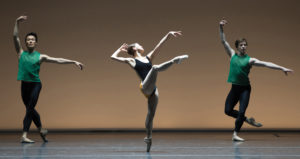
Photos: Rosalie O’Connor
Akiba is well positioned to take the long view. Before joining Boston Ballet II and then the main company, he literally grew up in the school. He was initially recruited via the organization’s CityDance program, which introduces public school students to ballet through residencies in their schools. Children who show potential and interest are invited to continue training at the South End studios. This and the other outreach programs — which include one for teenage girls and one for children with Down syndrome — are, says Akiba, “priceless, because even though 99.9 percent of those kids won’t become dancers, they have a better idea of what ballet is and that will last throughout their lives.”
Perhaps some of those 99.9 percent will become ardent balletomanes. As it happens, these days the company is enjoying healthy audience numbers. The 2015-2016 season broke, according to Hodges, “virtually every attendance record in the company’s history.”
Evoking a kind of “it takes a village” approach to their success, she cites the contributions not only of those directly related to the artistic product, but also the work of the administrative, marketing and development teams, school directors and teachers, the board of directors, the trustees and the volunteers.
“That sense of community begins with the dancers,” Hodges says, “and then you have all these different groups working in support of the art they perform. That is part of the glue that holds this community together.”
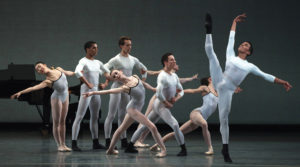
Photo: Rosalie O’Connor
